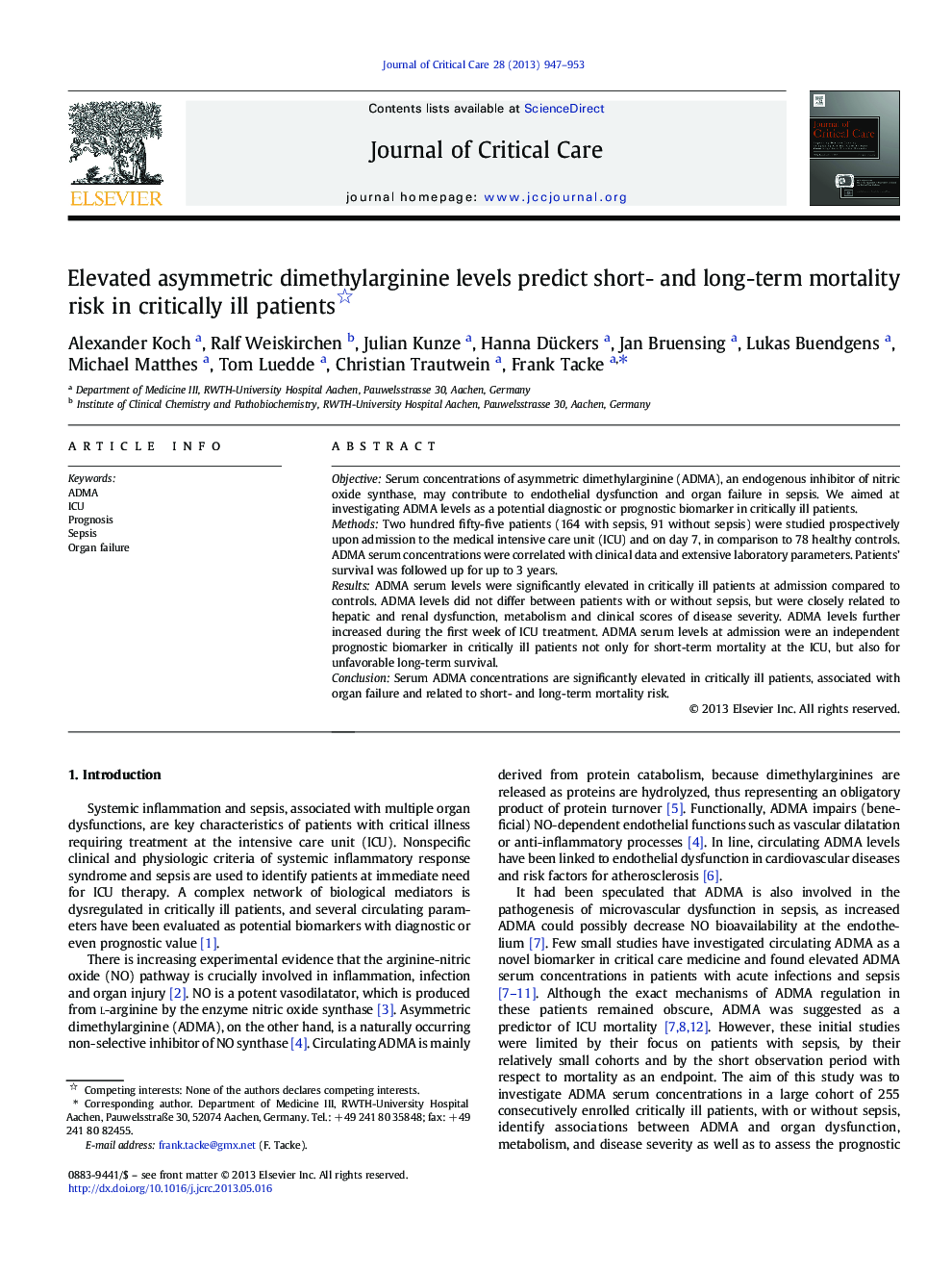| Article ID | Journal | Published Year | Pages | File Type |
|---|---|---|---|---|
| 5887035 | Journal of Critical Care | 2013 | 7 Pages |
ObjectiveSerum concentrations of asymmetric dimethylarginine (ADMA), an endogenous inhibitor of nitric oxide synthase, may contribute to endothelial dysfunction and organ failure in sepsis. We aimed at investigating ADMA levels as a potential diagnostic or prognostic biomarker in critically ill patients.MethodsTwo hundred fifty-five patients (164 with sepsis, 91 without sepsis) were studied prospectively upon admission to the medical intensive care unit (ICU) and on day 7, in comparison to 78 healthy controls. ADMA serum concentrations were correlated with clinical data and extensive laboratory parameters. Patients' survival was followed up for up to 3 years.ResultsADMA serum levels were significantly elevated in critically ill patients at admission compared to controls. ADMA levels did not differ between patients with or without sepsis, but were closely related to hepatic and renal dysfunction, metabolism and clinical scores of disease severity. ADMA levels further increased during the first week of ICU treatment. ADMA serum levels at admission were an independent prognostic biomarker in critically ill patients not only for short-term mortality at the ICU, but also for unfavorable long-term survival.ConclusionSerum ADMA concentrations are significantly elevated in critically ill patients, associated with organ failure and related to short- and long-term mortality risk.
